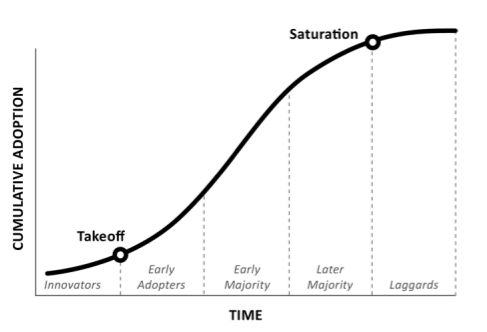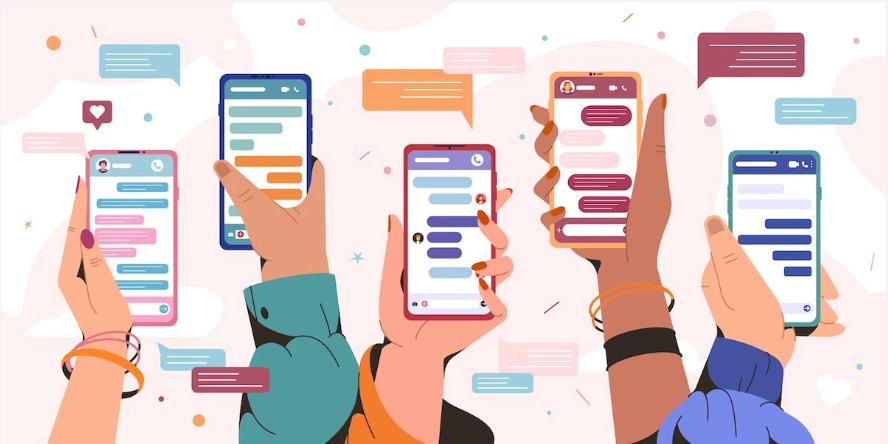Generative AI and its Potential in Your Hands
- By David Awakim
This is the very first technology that can learn from its own use.
On a sunny afternoon, imagine you’re enjoying an idle moment of summer bliss. Music is your companion, yet your playlist knows nothing of your latest fascination — it’s such a pain to search and add songs one after the other! Why can’t I just type “add more Taylor Swift” and see my feed auto-populate? A perfect mix of old and new curated for me and only me.
Well, why can’t we? It’s not that it’s technologically infeasible, in fact it is precisely the type of task that Large-Language Model artificial intelligence (LLM AI) is well-suited for. Their main mission is to parse language and return an agreeable, human response.
This deceit shouldn’t surprise anyone. Technology has traced behind humanity for as long as we have records. Greeks like Euclid developed sophisticated algorithms from sticks and sands, and other ancients all around the world made mechanical machinations to serve some fixed purpose.
LLM conversations are so realistic, that they’re used as a stepping stone to prepare for conversing with people! This is done by generating massive catalogs of training data that anticipate edge-cases and troubleshoot before issues even occur.
With the advent of the modern age, we began pursuing so-called general-purpose AI. A machine just as capable, as intelligent, as a human-being. The first great leap in this task was the advent of machine-learning: giving a machine feedback and a way to improve itself using that info. When this process is done without manual human review, we call it deep learning, and recently the most advanced ones have been LLMs. I’m certain you’ve heard of the poster child — ChatGPT!
This technology is so convincingly human, that it has already revolutionized the customer service world. LLMs will categorize and channel support issues, while at the same time helping to train specialized chatbots to interface with customers! LLM conversations are so realistic, that they’re used as a stepping stone to prepare for conversing with people! This is done by generating massive catalogs of training data that anticipate edge-cases and troubleshoot before issues even occur. They’ve even been used to provide live updates to websites, parsing through every single crevice and corner to ensure all hyperlinks and information are current; long gone are the days of 404 errors!
They only predict what the next response should be. It is pattern detection taken to the utmost, and it is critical to recognize this separation from validity
There is no reason why this marvelous technology should be out of your hands either. Right now you can visit chatGPT and converse. Ask it questions, to explain issues you’re uncertain about, even sample code! It is like a friend, who is an expert in almost every area imaginable available for you to reference and bounce ideas from — push the frontier!
LLM’s capabilities are so far-reaching, they’ve been officially endorsed by Microsoft through their Copilot program, allowing you to have your own code-writing assistant! This generative AI program can suggest code for you to use, leaning on key patterns from industry experts!
However, it is important to acknowledge that these machines don’t actually “understand” what is being said. They only predict what the next response should be. It is pattern detection taken to the utmost, and it is critical to recognize this separation from validity. Responses may not always be true, they may not always be ideal, but they do stem from commonality. And what is popular is always, at the very least, insightful.
While generative AI should never replace human input and decision-making, it can rapidly speed up our workflows and raise our capacities to novel heights. Nvidia recently released their ACE software, which can create conversational, fully functional video game characters with a click! From just a simple text prompt, they utilize LLMs to instill the character with “life”: its own customized ‘brain’ (LLM) that can process and reply in real-time with an auxiliary two-way text-and-speech LLM to facilitate chats! This is reality, this is tomorrow.
The company has also used AI to create rapid advances in graphics, slashing rendering times from hours to mere seconds! Many movie studios, such as the Mandalorian, have already integrated game-engines to create vivid 3d backgrounds. Goldman Sachs predicts that LLMs will lead to a 7% increase in global GDP (the internet only accounts for about 3.4% year-to-year), and they have already begun their own pilot programs wherein around 40% of code is AI-generated, causing double-digit productivity gains! Other integrations with similar success have been found in sectors as distant as the airlines and metallurgy! There have also been profound results in the medical field, for both research and care.
This technology is finding a home in so many different facets of our life, it necessitates us to question what else it may change. One publication from the Harvard Business Review suggests that it may affect the very nature of innovation. This is the very first technology that can learn from its own use. Rather than waiting for discoveries before deploying its applications, these processes can be intertwined in a cycle, where new applications drive novel understanding.
A newfound intimacy between a tool and its creator, a sort of unity that allows for AI to even partake in product development, suggesting new notions and plans predicated on the wealth of knowledge it can process. Similarly, humans acquire a companion that can be made to push its own boundaries, expand its own capabilities, and frankly, learn.
One needs to recognize this is not the first technology to change the world (although all changes it brings will be new). Previous breakthroughs have followed the so-called “sigmoid curve”, where slow-and-steady progress is supplanted by a rapid spike that plateaus. Are we at the spike? Perhaps we’ve found all that we can. Or, are all these wonderful and amazing new tools merely the first borrowings of a giant that will reshape our society to its very core? Only hindsight will tell, but the hands of today will shape that future. There’s a lot to explore, so go discover, create, and let’s find out its potential!



